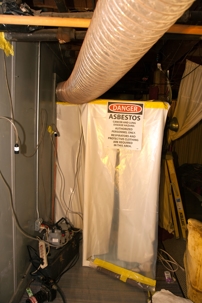At H.L. Moe Co., Inc, we take pride in being able to go above and beyond for our customers in ways other plumbing providers can’t. For instance, we are one of the few HVAC companies in Los Angeles that knows how to deal with gravity furnaces, wall furnaces, and floor furnaces. What are gravity furnaces, wall furnaces, and floor furnaces? Keep reading for what you need to know, and do not hesitate to call our skilled technicians at H.L. Moe Co., Inc for all your essential heating and cooling needs.
Gravity Furnaces
Gravity furnaces were common in buildings from the late 1800s up till the mid-twentieth century and are still used in multiple homes throughout the LA area today. Also known as “octopus furnaces,” gravity furnaces work kind of like a large stove. This type of equipment comes with a chamber to burn fuel in order to generate heat, which is then transferred through the air ducts in your home. Gravity furnaces do not use a blower motor to transfer heat, instead relying on the principle of heat rising—hence the name gravity furnace. This is why gravity furnaces are typically installed at the lowest point in a property (for example, if you have a basement, that’s probably where this system is found.) As for the nickname octopus furnace, it comes from the multiple pipes, or “arms,” which extend from gravity furnaces into a property’s ductwork.
In addition to the fact that gravity furnaces traditionally rely on coal as a fuel source, these systems have also fallen out of fashion because they are simply less efficient than modern heating units. Keep in mind that in California, most homes do not have basements, which is why you usually only see them in older properties. And although gravity furnaces are perfectly safe to operate, some older models were made with asbestos, which is another reason this equipment has been largely phased out over the years. To top it off, gravity furnaces are also slower than most modern heaters, and they are usually not compatible with central air conditioning systems, making installing one a non-starter for today’s property owners.
Wall Furnaces
Wall furnaces, also known as wall heaters, are typically found in small spaces. They became common in the 1950s as an alternate choice to baseboard and radiator heating systems, and were used in many smaller homes and apartments throughout the country. This type of equipment is installed directly in the wall, and uses fuel to pump warm air into the surrounding space. Therefore, they do not require ductwork like a central HVAC system, and are vented either directly through the outside part of the wall in single-story homes, or through the ceiling in multiple-story homes.
Although wall furnaces are extremely effective at heating small spaces, and tend to be less expensive to install and operate than central heating systems, they do require more cleaning, as there is no filter, so you will have to take care of the outer grating on these units yourself. There must also be a three-foot window around your wall furnace at all times, so it does not become a fire hazard. Plus, regular maintenance on wall furnaces is essential to ensure they are properly vented and are not at risk for leaking natural gas and carbon monoxide gasses.
Floor Furnaces
Much like wall furnaces, floor furnaces are exactly what they sound like—furnaces that are installed directly into the floor. These systems radiate heat from a grate in the floor, using propane, natural gas, or electricity to function. There are also geothermal floor systems, which use a series of pipes underneath your floor to circulate hot water, which then heats people or objects in the room as opposed to transferring warm air. These are slightly different than the type of equipment we are concentrating on in this blog, however, which is forced air systems.
In the past, floor furnaces typically came with just an “on” and “off” setting, which makes them slightly less energy-efficient than modern central heating systems. Like wall furnaces, they are also primarily used for heating one room at a time, making them a better choice for smaller homes that do not have an existing network of air ducts. You will always want to be alert for signs of water leakage if you have a floor furnace, and changing the filter every 30 days in the winter is essential for successful operation. It goes without saying you should also keep all flammable materials away from your floor furnace. And of course, while you can vacuum the grills of your floor furnace while it is not in operation to keep it clean, make sure there is nothing on top of it when it is running, and keep children and pets away from the floor grate at all times.
What You Should Do If You Have a Gravity, Wall, or Floor Furnace
As mentioned above, H.L. Moe Co., Inc is one of the few HVAC providers in the area that offers heater repairs for gravity furnaces, wall furnaces, and floor furnaces, so if you like this type of system and want to keep using it, our technicians will happily provide the assistance you need. Alternately, you may want to consider installing a modern furnace or heating system, that may better keep up with your yearly needs. The great part about living in California is that we typically don’t use our heating equipment for most of the year, so you have time to decide. Don’t wait too long though, as the last thing you want is to find your system is broken when you really need it. Just remember, no matter what you decide to do, you can count on our experienced HVAC technicians at H.L. Moe Co., Inc to get the job done right.
To schedule heating repair or installation today, just call (818) 396-8002. You can also contact us anytime online. And make sure to ask about available specials and financing!

